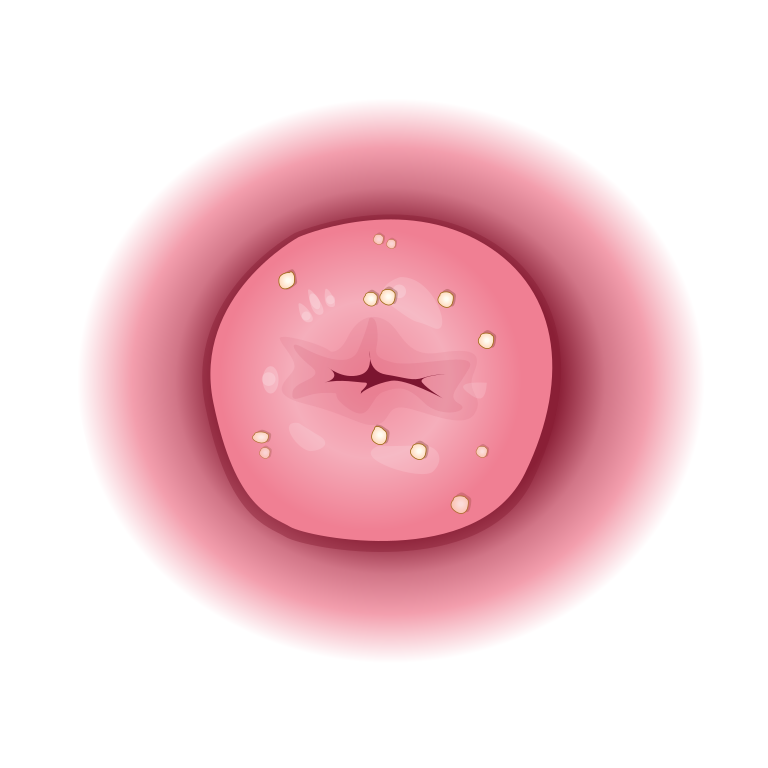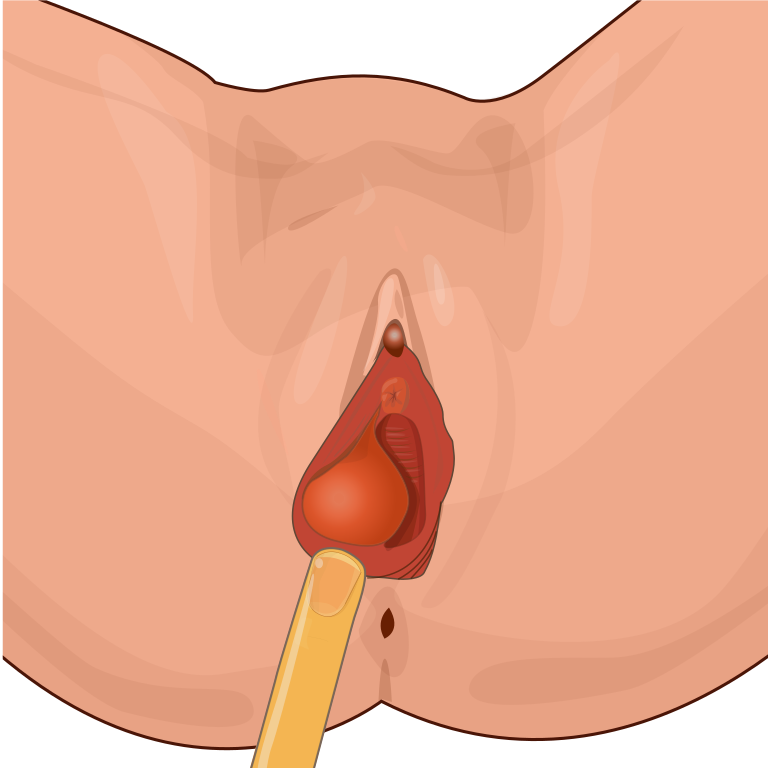18.5 Benign Growths
Benign growths are noncancerous growths that may or may not require medical treatment.
Cervical Growths
Growths on the cervix are typically benign and are usually an incidental finding during a routine examination. Clients with cervical growths may experience minor bleeding after sexual intercourse. Cervical growths are commonly caused by mucous cysts, polyps, or genital warts. Mucous cysts, also called Nabothian cysts, are formed from mucus-producing tissue and typically do not require treatment unless they become very large. See Figure 18.5[1] for an illustration of Nabothian cysts. Cervical polyps are fleshy, red-colored growths protruding from the cervix and do not require treatment unless they become a nuisance to the client. Genital warts are caused by the human papillomavirus (HPV) and appear like cauliflower-type growths on the cervix or in the vagina, on the vulva, or in the perianal area. The HPV vaccine prevents more than 90 percent of the virus strains that cause genital warts, including those that cause cervical cancer. Genital warts are treated by the application of an acidic solution by a health care provider. Severe cases or those with abnormal cell growth are removed surgically.[2]

Read more about cervical cancer and associated treatment in the “Female Reproductive System Disorders” section of the “Reproductive Concepts” chapter.
Vulvar Growths
Bartholin’s glands are located inside the vaginal opening and provide moisture and lubrication to the vagina. Obstruction of one of these glands can cause a fluid-filled cyst to form that may become enlarged, painful, and/or infected, often referred to as a Bartholin cyst. See Figure 18.6[3] for an illustration of a Bartholin cyst. Conservative treatment includes warm compresses or sitz baths to encourage vasodilation and resolution of the cyst by the immune system response. Antibiotics may be prescribed if the cyst becomes infected. Common bacteria causing infection are Escherichia coli (E. coli), methicillin-resistant Staphylococcus aureus (MRSA), and those causing gonorrhea and chlamydia. In severe cases, the cyst may become very inflamed and require incision and drainage by the health care provider.[4]

- “Nabothian_cyst_svg_hariadhi” by Hariadhi is licensed under CC BY-SA 4.0 ↵
- Giles, A., Prusinski, R., & Wallace, L. (2024). Maternal-newborn nursing. OpenStax. https://openstax.org/books/maternal-newborn-nursing/pages/1-introduction ↵
- “Bartholin_cyst_svg_hariadhi” by Hariadhi is licensed under CC BY-SA 4.0 ↵
- Giles, A., Prusinski, R., & Wallace, L. (2024). Maternal-newborn nursing. OpenStax. https://openstax.org/books/maternal-newborn-nursing/pages/1-introduction ↵
Noncancerous growths that may or may not require medical treatment.
Also called Nabothian cysts, are formed from mucus-producing tissue and typically do not require treatment unless they become very large.
A fluid-filled lump that can develop in the Bartholin gland of the vulva.

